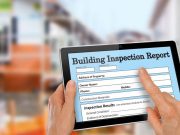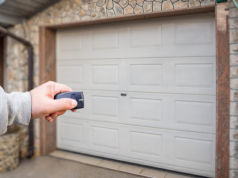Have you ever wondered what goes into a successful pest inspection? Do you worry about hidden infestations that might threaten your property’s structure and value? You’re not alone. Many homeowners feel anxious when it’s time to invite an inspector in, especially if it’s their first time dealing with a building and pest inspection in Victoria. But rest assured, this friendly guide will show you exactly how to prepare for a pest inspection, so you’ll feel confident, organised, and ready to welcome the inspector with peace of mind.
In this post, we’ll explore the benefits of pre purchase house inspections in Dandenong. We’ll also explain whether it’s best to schedule a building inspection before or after making an offer, plus shed light on Victoria’s guidelines. You’ll discover what building inspectors look for, what to look for in a home inspector, and how to handle any issues they might uncover. Finally, you’ll learn how to inspect a pest problem yourself—identifying early warning signs and tackling minor repairs before they become big headaches.
Along the way, we’ll look at specific checklists and frequently asked questions, so you’ll have a clear roadmap to follow. By the end of this article, you’ll know the exact steps on how to prepare for a pest inspection and how to follow up if problems arise. Now, let’s kick things off and talk about why pest inspections are such a vital part of protecting your home.
 Understanding the Importance of Pest Inspections
Understanding the Importance of Pest Inspections
Pest inspections protect your home from structural damage and potential health hazards. When you have pests like termites, ants, or rodents lurking in the walls, they can cause serious harm to the foundations and framework of your property. On top of that, infestations often go unnoticed until they’ve caused tangible damage. By scheduling regular inspections, you can spot early indications of these intruders and get them rectified before the problem spirals out of control.
Professionals who perform building and pest inspection in Victoria use their industry knowledge and specialised tools to locate problem areas. They also assess how severe the situation might be and suggest suitable treatments. In the long run, this service can save you a great deal of money—and anxiety—by preventing large-scale infestations.
Beyond protecting your wallet, a consistent inspection routine helps you maintain a healthy living space. Pests like cockroaches and rats can spread diseases, contaminate food, and cause discomfort for your loved ones or tenants. A thorough pest inspection helps you safeguard everyone’s wellbeing, ensuring that your home remains safe and comfortable.
The Role of Pre Purchase House Inspections in Dandenong
If you’re buying a home in Dandenong, a pre purchase house inspection is an absolute must. This type of inspection ensures you know exactly what you’re getting into. There’s nothing worse than investing loads of money in a new place, only to find out you’ve inherited a hidden termite colony in the kitchen walls. By opting for a professional pre purchase house inspection, you’ll be able to gauge the property’s overall state, as well as identify urgent pest-related concerns.
This extra step is especially helpful in competitive property markets, where sellers might mask problems to secure a higher price. Protect yourself by consulting a registered inspector who can provide a comprehensive report. That way, you’ll be equipped to negotiate the purchase price or ask the seller for necessary repairs. Being proactive with pre purchase house inspections in Dandenong helps you make a confident choice and avoid any unpleasant surprises.
Building Inspection Before or After an Offer?
Should You Arrange a Building Inspection Before or After Making an Offer?
One of the most common questions buyers ask is whether to schedule a building inspection before or after making an offer. Generally, it’s wise to book a building inspection before putting forward your formal bid. This approach allows you to back out of the deal if any major problems emerge or to adjust your offer based on the property’s actual condition.
On the other hand, in some competitive markets, you might feel pressured to make an offer right away. If that happens, include a condition in your contract: a clause that states your offer is subject to a satisfactory building inspection. If the inspector unearths major issues, this clause shields you from being locked into an agreement or at least gives you a way to renegotiate the sale price.
Overall, it depends on how much risk you’re willing to take and how hot the local property market is. But whether you arrange a building inspection before or after offer, the main goal remains the same: get a reliable assessment of the property’s condition and ensure you can make an informed decision.
Understanding Victoria’s Regulations and Guidelines
Victoria has specific rules about disclosure and property information, but that doesn’t always mean every defect will be laid out on a platter. Home sellers are often required to disclose any known issues, including pest infestations or structural defects. Still, if you rely solely on these disclosures, you might miss a few hidden surprises. That’s why it’s essential to review a building inspection checklist Victoria professionals use, along with any supplementary guidance from organisations like Consumer Affairs Victoria.
Following these official guidelines can protect you from making an uninformed purchase. Never be shy to ask for references or qualifications from your chosen inspector. In Victoria, reputable inspectors usually hold professional licences or credentials that show they meet state regulations. As a buyer, it’s important to verify these credentials and confirm that your prospective inspector knows the local building codes inside out.
What Do Building Inspectors Look For?
Structural Red Flags and Safety Concerns
When a building inspector arrives, they’ll start by assessing the structural integrity of the property. Things like cracks in the walls, water damage, or sagging roofs can point to deeper problems. If left unchecked, these issues can jeopardise the safety of your family and the longevity of your investment. What do building inspectors look for? They look for anything that indicates structural weakness, such as termite-infested beams, rotting timber framework, or signs of poor construction.
Safety concerns often come to light when an inspector checks electrical systems and plumbing. Outdated wiring or leaking pipes aren’t just minor nuisances—they can pose serious threats. An electrical short can spark a fire, while undetected water leaks lead to dampness, mould, and potential pests. Inspectors will highlight these problems, giving you the opportunity to tackle them promptly.
Keep in mind, inspectors don’t usually carry out invasive checks unless it’s part of your contract. So if you suspect deeper issues, a specialist inspector may be recommended. That extra step might be worth it if you plan major renovations later or if your first inspection uncovers red flags.
Identifying Pest Infestations and Problem Areas
Another piece of the puzzle is spotting any insect or rodent infestation. Building inspectors often work in tandem with pest inspectors to give you a broad look at the home’s health. They’ll search for signs of termite activity, like hollow-sounding timber or mud tubes, and peel back hidden areas where ants or rodents might hide.
Sometimes, owners might have patched up visible holes or cracks, so the inspector will pay extra attention to parapets, basements, or areas with high moisture. Additionally, they might discuss the overall hygiene or cleanliness of the property, which can attract pests when neglected. If they notice a lot of clutter, tall weeds, or damp corners, they’re likely to note it in their report.
Building Inspection Checklist Victoria
In Victoria, inspectors follow established guidelines to ensure each property is thoroughly evaluated. They methodically check:
- Structural stability (walls, floors, roof).
- Signs of water damage or mould.
- Subfloor and roof space for obvious defects.
- Timber for pests such as termites or fungi.
- Internal fixtures like windows, doors, electrical outlets.
- Plumbing works for leaks or corrosion.
This building inspection checklist Victoria professionals use offers a systematic approach so that nothing crucial gets overlooked. While the list may vary slightly between inspectors, these core checks remain consistent and help keep property owners well informed.
Building and Pest Inspection Victoria Requirements
If a home does indeed harbour pests or structural risks, building and pest inspection Victoria regulations often require honest reporting. A qualified professional has a duty to provide an accurate account of their findings. These requirements protect buyers, sellers, and estate agents from misunderstandings or disputes. Be sure to read your inspection report carefully, ask questions, and request clarification if something sounds vague. Practising clear communication at this stage sets the tone for successful negotiations and timely repairs.
What to Look for in a Home Inspector?
Qualifications, Experience, and References
When searching for a home inspector, you’ll want to prioritise qualifications, references, and proven track records. Ask candidates if they hold professional certifications pertinent to home inspection Victoria standards. Also, check if they specialise in the type of property you plan to purchase, whether it’s a stand-alone home, a townhouse, or a unit in a larger block.
Seasoned inspectors should happily supply references from previous clients. Don’t just take their word for it—get in touch with these references to hear about their personal experiences. If an inspector is reluctant to provide contact details, consider that a red flag. Reputable inspectors know that word-of-mouth recommendations affirm their capabilities.
Adhering to Home Inspection Victoria Standards
In Victoria, many inspectors align with recognised industry associations and adhere to codes of practice that define how they conduct their assessments. To confirm they meet home inspection Victoria standards, do some research on the organisation an inspector is registered with. If they’re members of bodies like the Housing Industry Association (HIA) or the Australian Institute of Building Surveyors (AIBS), it’s a good sign they’ve met specific training and ethical guidelines.
When in doubt, consult state consumer affairs websites, which maintain guidelines for inspectors. These resources can help you compare various inspectors and decide who to trust. Choose a professional whose conduct is transparent, detailed, and considerate of your unique circumstances.
What to Look for When Inspecting a House?
Key Interior and Exterior Areas to Examine
Whether you’re buying a house, building inspection professionals will typically focus on important areas like foundations, roofs, kitchens, bathrooms, and outdoor spaces. Inside, anticipate checks for damp patches, cracked walls, or evidence of leaks around windowsills and basements. Then, they’ll scan floors and ceilings for warping or moisture retention.
Outside, they’ll check gutters, downpipes, and drains to ensure proper water flow. They might also examine the landscaping, retaining walls, or driveways. Overhanging branches brushing against the roof can serve as a gateway for pests. An unkept garden might also invite termites. You can conduct a basic review yourself before calling the inspector, so you’ll know where to direct them if you suspect anything unusual.
Buying a House Building Inspection: Critical Considerations
When it comes to buying a house building inspection, remember that little flaws can sometimes hint at bigger underlying problems. A small crack might be harmless, or it might signal subsidence in the foundations. A worn patch of paint might be purely cosmetic, or it could hide a patch job for termite damage.
Any reputable inspector will detail these observations in their report, helping you decide if you should negotiate a lower price, insist on repairs, or walk away altogether. Don’t be swayed by a home’s cosmetic appeal. Shiny floors or renovated bathrooms might distract you from deeper issues. The purpose of the inspection is to help you see past the surface and assess the home’s true condition.
Spotting Early Signs of Damage or Infestation
Learning to recognise early red flags can help you identify a pest problem before it worsens. Look for droppings, gnaw marks, musty odours, and holes in walls or floorboards. Termite-infested areas typically display tiny holes or hollow sounds when tapped. Cockroach droppings often resemble coffee grounds or pepper-like specks. And rodents sometimes leave greasy marks along walls.
If you see unexplained dirt piles or tunnels in your garden, that might indicate ants or subterranean termites. It’s best to call in professionals if you suspect anything major. Being proactive can save you countless pounds down the road, especially when it comes to structural damage.
How to Prepare for a Pest Inspection
Clearing Clutter and Providing Inspector Access
If you genuinely want to inspect a pest situation, start by removing clutter and providing clear access to each room. Move furniture away from walls, clear items from the garage, and tidy up any stored boxes. By doing so, the inspector can check skirting boards, corners, and other potential pest hiding spots without moving your personal belongings.
Additionally, clear a path to basement hatches, loft entries, or subfloor access points. If inspectors can’t access these critical areas, the final report will be incomplete, leaving you vulnerable to missed problems. Good access also shows you’re prepared and proactive, which helps the process go more smoothly.
Removing Food Sources and Potential Hiding Spots
How to prepare for a pest inspection? Start by eliminating anything that might feed or shelter pests. Simple actions—like storing food in sealed containers and clearing out stashes of paper or cardboard—can make a large difference. Don’t pile up firewood against exterior walls, because this easy access can attract termites. Make sure bins have closed lids and are kept away from doorways.
Outdoors, trim back shrubs or branches that brush directly against the house. Remove standing water or fix leaky taps, as damp areas invite mosquitoes and other insects. The aim is to create an environment that’s as unwelcoming to pests as possible. This reduces the likelihood of a hidden infestation and helps inspectors detect any existing ones more accurately.
Inspect a Pest: Recognising Early Warning Signs
When you’re getting ready for a pest inspection, it’s helpful to do your own mini assessment first. Inspect a pest situation by examining windowsills, air vents, and door frames for telltale signs such as droppings, gnaw marks, or unusual stains. If you spot something suspicious, mark that area so the inspector can focus on it.
Keep an eye out for ants manoeuvring their way into cracks, spiders nesting behind furniture, or any odd pest behaviour. Make notes of these observations. Communicating them to the inspector at the start can help them conduct a more thorough review. Awareness is everything when aiming to eliminate potential pest issues.
Communicating Repair History and Concerns
Got a leaky roof you fixed last winter or a rodent problem you handled last year? Be open about it. By communicating your repair history to the inspector, they can revisit those areas to confirm the problem is fully resolved. This honesty underlines you as a responsible homeowner, and it enriches the inspector’s understanding of the property.
If you’ve made any DIY improvements, point them out. This might include bracing walls, replacing gutters, or sealing cracks. Inspectors appreciate direct information because it reduces guesswork and helps them confirm whether your solutions are holding up properly.
Step-by-Step Pest Inspection Preparation Checklist
Indoor Preparation: Kitchens, Bathrooms, and Living Areas
- Clear used dishes and wipe counters—food scraps can lure pests.
- Empty and clean rubbish bins, then store them away from inside doorways.
- Repair any obvious leaks under sinks or around piping.
- Move larger appliances, like fridges or washing machines, away from walls for extra visibility.
- Declutter lounge areas and shelves, ensuring furniture is easy to move if needed.
Kitchens often harbour leftover crumbs, while bathrooms can be damp. Both are prime locations for cockroaches, ants, or mould. A quick declutter can help inspectors move freely, plus it lowers potential hiding spots for pests. Living areas should also be tidy, so an inspector can spot warning signs like droppings or damaged skirting boards.
Outdoor Preparation: Gardens, Decks, and Outbuildings
- Trim back tree branches, shrubs, or vines that touch external walls.
- Remove standing water sources, like old buckets or clogged gutters.
- Store firewood several metres away from the house.
- Clear debris from decking, patios, and sheds.
- Check fences, gates, and drainage points for structural issues.
Pest-attracting debris is particularly common outdoors. Wet leaves, woodpiles, or leaking hoses give insects and rodents convenient havens. Inspectors will want to see if your yard could be inadvertently encouraging pests to move indoors. The cleaner the exterior, the simpler it is to catch hidden trouble spots.
Follow-Up Actions Post-Inspection
After your pest inspection, you’ll likely receive a report detailing any issues. If the inspector notes a problem area, address it quickly to prevent further damage. That might mean contacting a professional pest controller or scheduling structural repairs. Prompt action is the best way to keep minor complications from escalating.
Where possible, maintain a consistent line of communication with your inspector or pest control provider. They can advise you on precautionary measures—like routine treatments or extra sealing of entry points. The key is to stay proactive, so you don’t end up dealing with a massive infestation later. Taking these steps not only strengthens your home’s defences but also keeps repairs and disruptions to a minimum.
Conclusion
Ultimately, learning how to prepare for a pest inspection ensures you won’t be caught off guard by unwanted surprises. From clearing clutter and ensuring easy access for inspectors, to communicating your home’s repair history, small steps can make a massive difference. Whether you’re a homeowner maintaining your property or a buyer scheduling a building and pest inspection in Dandenong, professional assessments are vital for your peace of mind.
The question of whether to book a building inspection before or after an offer remains a common dilemma, yet both approaches aim for the same outcome: a thorough property evaluation. Once you understand what building inspectors look for, you can engage qualified professionals who follow the building inspection checklist Victoria recommends. Maintaining clear communication throughout the process helps you fully grasp the condition of your property.
Next Steps Towards a Successful Building Inspection
Now that you’re familiar with the key steps and considerations, you’re better equipped to protect your investment. Maintaining clean interiors and exteriors, plus fixing minor issues promptly, helps reduce pest risks early. If your report reveals any concerns, don’t stress—follow-up solutions such as expert treatments or negotiated repairs are always options.
By following the guidance in this article, you’ll be well-prepared to meet with inspectors, share concerns, and respond wisely to any findings. A well-executed building and pest inspection Dandenong process can shield you from surprise costs, improve safety, and even enhance your property’s value. Here’s to a smooth inspection and the peace of mind that comes from knowing your home is in excellent shape!











































